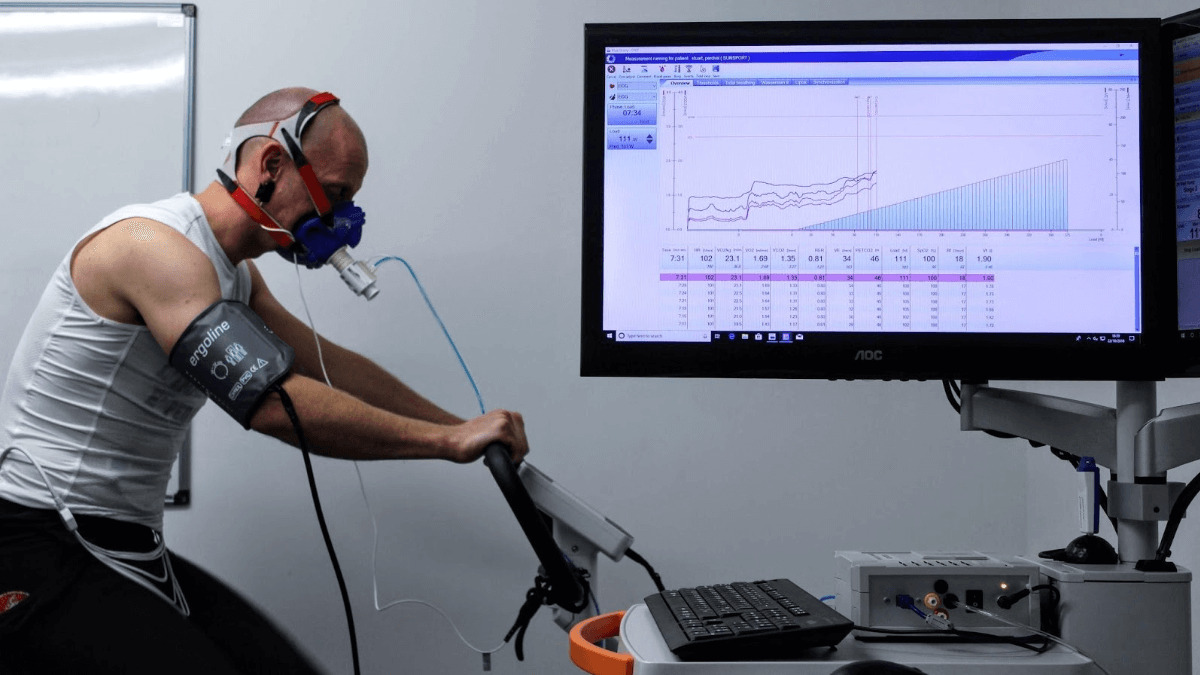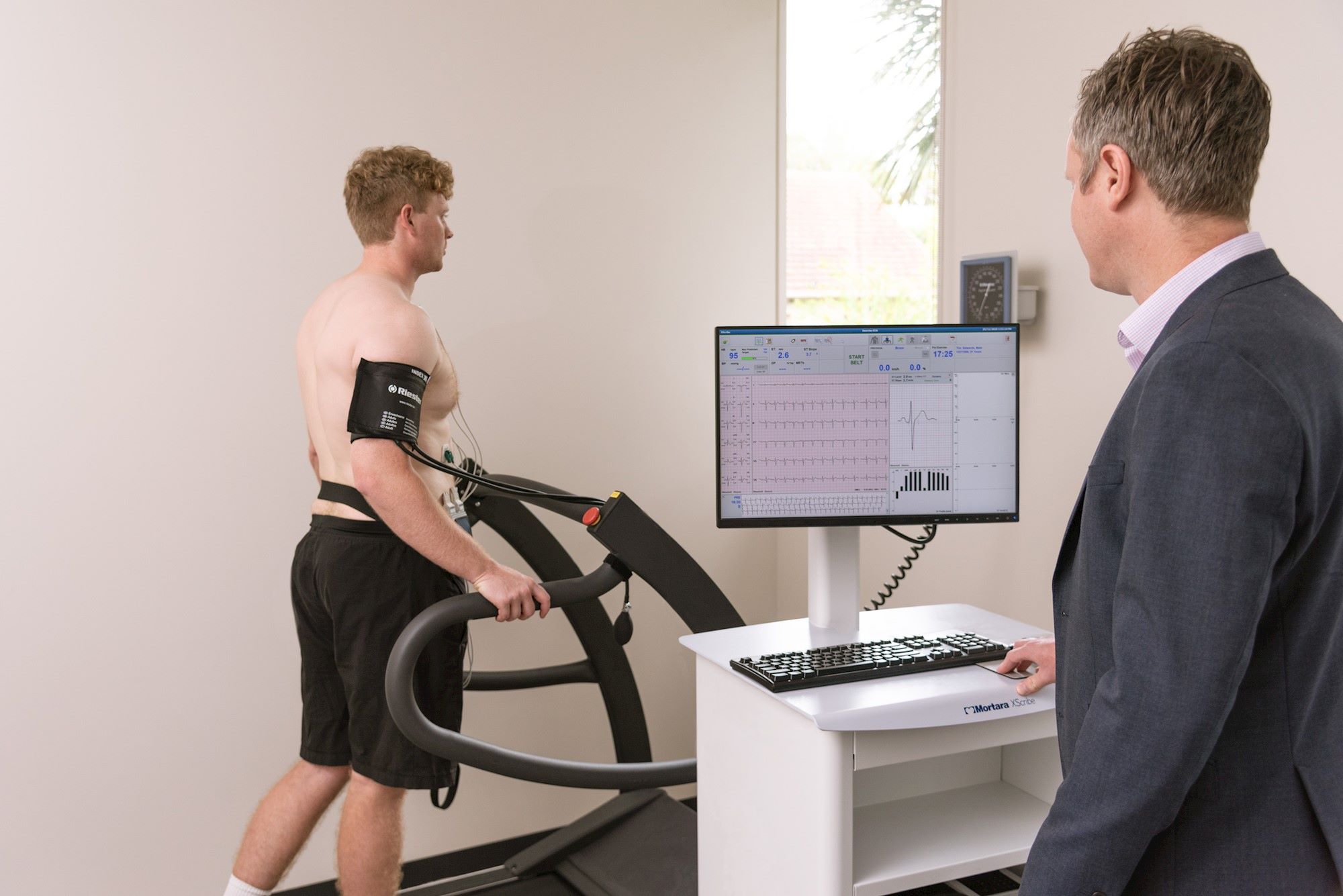Home>Misc>Featured>How Does Running Increase Cardiovascular Fitness


Featured
How Does Running Increase Cardiovascular Fitness
Modified: August 21, 2023
Improve cardiovascular fitness with running! Discover how this featured exercise can boost your heart health and overall endurance.
Introduction
Cardiovascular fitness is a vital component of overall health and well-being. It refers to the ability of the heart, lungs, and blood vessels to efficiently deliver oxygen and nutrients to the muscles during physical activity. A higher cardiovascular fitness level is associated with numerous health benefits, including improved heart function, increased energy levels, reduced risk of chronic diseases, and enhanced mental well-being.
One popular form of exercise that has proven to be highly effective in improving cardiovascular fitness is running. Running is not only a convenient and accessible activity but also offers a range of benefits beyond just cardiovascular health. Whether you’re a seasoned runner or just starting out, understanding how running can improve your cardiovascular fitness can help you optimize your workouts and achieve your fitness goals.
In this article, we will explore how running specifically targets and enhances cardiovascular fitness. We will delve into the physiological changes that occur in the body during running, the impact it has on heart rate, and the long-term effects it can have on overall cardiovascular health.
So, if you’re ready to lace up your running shoes and hit the pavement, let’s dive into the world of running and its incredible benefits for cardiovascular fitness!
What is Cardiovascular Fitness?
Cardiovascular fitness, also known as aerobic fitness, refers to the ability of the cardiovascular system to efficiently supply oxygenated blood to the muscles during physical activity. It is a measure of the overall health and efficiency of the heart, lungs, and blood vessels.
When you engage in activities that increase your heart rate, such as running, your cardiovascular system is called upon to deliver oxygen and nutrients to your muscles to sustain the activity. The more efficient your cardiovascular system is, the better it can meet these demands, allowing you to engage in physical activity for longer durations without feeling fatigued.
Cardiovascular fitness is typically assessed by measuring maximum oxygen uptake (VO2 max) – the maximum amount of oxygen your body can utilize during intense exercise. The higher your VO2 max, the greater your cardiovascular fitness.
In addition to its impact on physical performance, cardiovascular fitness is closely linked to overall health and well-being. Regular aerobic exercise, such as running, has been shown to reduce the risk of cardiovascular diseases, including heart disease and stroke. It can also help manage weight, improve insulin sensitivity, boost immune function, and enhance mental health.
Improving cardiovascular fitness benefits people of all ages and fitness levels. Whether you’re a beginner or an experienced athlete, incorporating activities that target cardiovascular fitness into your routine can have significant positive impacts on your health and quality of life.
Benefits of Cardiovascular Fitness
Engaging in regular cardiovascular exercise, such as running, can offer a wide range of benefits for your overall health and well-being. Here are some of the key advantages of maintaining good cardiovascular fitness:
- Improved Heart Health: Cardiovascular exercise strengthens the heart muscle, improving its efficiency and reducing the risk of heart disease. It can lower blood pressure, decrease bad cholesterol levels, and increase good cholesterol levels, promoting a healthier cardiovascular system.
- Increased Energy Levels: Regular aerobic exercise boosts energy levels by enhancing blood flow and oxygen delivery to the muscles, improving your endurance and stamina. This increased energy can improve your productivity throughout the day.
- Weight Management: Cardiovascular exercise helps burn calories, aiding in weight management and preventing weight gain. It can also help reduce body fat, particularly around the waist and abdominal area.
- Enhanced Mental Well-being: Cardiovascular exercise releases feel-good chemicals in the brain, such as endorphins, which can help alleviate symptoms of depression, anxiety, and stress. It can also improve cognitive function, memory, and overall mental clarity.
- Reduced Risk of Chronic Diseases: Regular aerobic exercise has been shown to lower the risk of chronic diseases such as diabetes, certain cancers, and metabolic syndrome. It also improves immune function, reducing the risk of infections and illnesses.
- Improved Sleep Quality: Engaging in cardiovascular exercise promotes better sleep by reducing stress, anxiety, and restlessness. It can also help regulate sleep patterns, leading to a more restful and rejuvenating sleep.
- Increased Longevity: Studies have shown that individuals with good cardiovascular fitness tend to live longer and have a lower risk of premature mortality. Regular aerobic exercise, such as running, can significantly contribute to a longer and healthier life.
These are just a few of the many benefits that cardiovascular fitness can provide. Incorporating activities like running into your routine can have a profound positive impact on your physical and mental health, allowing you to lead a more active and fulfilling life.
How Does Running Improve Cardiovascular Fitness?
Running is an excellent form of cardiovascular exercise that can significantly enhance cardiovascular fitness. It provides numerous physiological benefits that improve the efficiency of the cardiovascular system and increase aerobic capacity. Here are some ways in which running improves cardiovascular fitness:
- Increased Heart Strength: Running requires the heart to pump blood at a faster rate to meet the increased oxygen demands of the muscles. This consistent challenge strengthens the heart muscle over time, making it more efficient at pumping blood.
- Improved Lung Function: During running, the lungs work harder as they take in more oxygen and expel carbon dioxide at a faster rate. This repetitive deep breathing improves lung capacity and oxygen intake, enhancing overall respiratory function.
- Enhanced Oxygen Delivery: Running stimulates the growth of new capillaries, small blood vessels that deliver oxygen-rich blood to the muscles. This increased network of capillaries improves the delivery of oxygen and nutrients to the working muscles, enhancing endurance and performance.
- Increased Red Blood Cell Production: Running stimulates the production of red blood cells, which are responsible for carrying oxygen from the lungs to the muscles. This increased production improves the oxygen-carrying capacity of the blood, enhancing overall cardiovascular fitness.
- Lower Resting Heart Rate: Regular running lowers resting heart rate, indicating a more efficient heart. A lower resting heart rate means that the heart doesn’t have to work as hard to pump blood at rest, reducing strain on the cardiovascular system.
- Improved Cardiac Output: Running increases cardiac output, which is the amount of blood pumped by the heart per minute. With regular running, the heart becomes more efficient at pumping larger volumes of blood, supplying oxygen to the muscles more effectively during physical activity.
- Enhanced Stamina and Endurance: Regular running improves the body’s ability to utilize oxygen efficiently, resulting in increased stamina and endurance. This allows individuals to engage in prolonged physical activity without experiencing excessive fatigue.
By regularly engaging in running, individuals can strengthen their cardiovascular system, improve aerobic capacity, and optimize overall cardiovascular fitness. Incorporating this activity into your fitness routine can have lasting benefits for your health and well-being.
Heart Rate and Running
Heart rate plays a crucial role in monitoring and optimizing cardiovascular fitness during running. It provides valuable insights into the intensity of your workout and helps you gauge your progress. Understanding the relationship between heart rate and running can help you tailor your training to achieve optimal cardiovascular benefits.
During running, the heart rate increases to meet the oxygen demands of the working muscles. The level of intensity determines how high your heart rate will rise. It is typically measured in beats per minute (BPM) and can vary based on factors such as age, fitness level, and running pace.
To determine your target heart rate zone for running, you can use the maximum heart rate formula: 220 minus your age. For example, if you are 30 years old, your estimated maximum heart rate would be 190 BPM. The general guideline for moderate aerobic exercise is to aim for a heart rate that is 50-70% of your maximum heart rate, and for vigorous exercise, it should be 70-85%.
Monitoring your heart rate during running can be done using a heart rate monitor or by using the manual method of taking your pulse. By staying within your target heart rate zone, you can ensure that you’re working at an intensity level that is challenging enough to improve cardiovascular fitness without overexerting yourself.
By consistently training within your target heart rate zone, running can help you achieve several benefits, including increased cardiovascular endurance, improved aerobic capacity, and a stronger heart. As you become more fit, your heart rate response to running may decrease, indicating that your cardiovascular system is becoming more efficient.
It’s important to note that individual variations in heart rate response to exercise exist. Factors such as fitness level, age, and genetics can influence heart rate. Therefore, it is essential to listen to your body and adjust your running intensity accordingly.
Overall, understanding your heart rate and its relationship to running can help you optimize your training and progress towards your cardiovascular fitness goals. By monitoring and controlling your heart rate during running, you can ensure that you’re getting the most out of your workouts and improving your cardiovascular health in a safe and effective manner.
Long-Term Effects of Running on Cardiovascular Fitness
Engaging in regular running over the long term can have profound and lasting effects on cardiovascular fitness. It has been well-documented that consistent aerobic exercise, such as running, leads to significant improvements in cardiovascular health and overall fitness.
Here are some of the long-term effects of running on cardiovascular fitness:
- Increased VO2 max: VO2 max is a measure of the maximum amount of oxygen your body can use during intense physical activity. Regular running can significantly increase your VO2 max, indicating an enhanced aerobic capacity and improved cardiovascular fitness.
- Reduced Resting Heart Rate: Long-term runners often have lower resting heart rates due to their cardiovascular adaptations. A lower resting heart rate indicates a more efficient heart and is a sign of improved cardiovascular fitness.
- Improved Stroke Volume: Stroke volume refers to the amount of blood ejected by the heart with each beat. Regular running increases stroke volume, enabling the heart to pump more blood per beat and improving overall cardiovascular function.
- Lower Blood Pressure: Running helps to lower blood pressure by improving the elasticity of the blood vessels, reducing the strain on the cardiovascular system. This decrease in blood pressure reduces the risk of cardiovascular diseases such as hypertension and stroke.
- Reduced Risk of Heart Disease: Regular running has been shown to lower the risk of developing heart disease. It helps to improve cholesterol profiles, increase HDL (good) cholesterol levels, and reduce LDL (bad) cholesterol levels, leading to a healthier cardiovascular system.
- Enhanced Capillary Formation: Running promotes the growth of new capillaries, which increases the network of blood vessels in the muscles. This improved capillary density enhances oxygen and nutrient delivery to the muscles, improving endurance and overall cardiovascular fitness.
- Decreased Risk of Type 2 Diabetes: Running is an effective way to reduce the risk of developing type 2 diabetes. It helps to improve insulin sensitivity, regulate blood sugar levels, and maintain a healthy body weight, all of which are vital for preventing diabetes.
It’s important to note that the long-term effects of running on cardiovascular fitness are highly individualized and depend on factors such as baseline fitness level, age, genetics, and consistency of training. Nonetheless, incorporating running as a regular part of your fitness routine can have significant positive impacts on your cardiovascular health and fitness.
By committing to a long-term running practice, you can experience lasting improvements in cardiovascular endurance, increased aerobic capacity, and a stronger and healthier heart. It is essential to approach running with consistency, gradually increasing intensity and duration to avoid overexertion and reduce the risk of injury.
Other Factors to Consider
While running is an effective means of improving cardiovascular fitness, there are several other factors to consider to ensure a safe and successful running practice. These factors can impact your overall cardiovascular health and your ability to maximize the benefits of running. Here are some key considerations:
- Proper Form and Technique: Maintaining proper running form is essential to prevent injuries and optimize performance. Proper posture, stride length, foot strike, and arm movement can minimize stress on the joints and muscles, allowing for efficient running and reducing the risk of overuse injuries.
- Gradual Progression: It’s important to start running at a level that is appropriate for your fitness level and gradually progress over time. Gradual progression allows your body to adapt to the demands of running, reducing the risk of overtraining and injury. Listening to your body and taking rest days is crucial for recovery and avoiding burnout.
- Strength Training: Incorporating strength training exercises into your routine can complement running by improving muscular strength, enhancing joint stability, and reducing the risk of injuries. A strong core and lower body can significantly contribute to your running performance and overall cardiovascular fitness.
- Proper Nutrition: Fueling your body with a balanced diet that includes adequate carbohydrates, proteins, and healthy fats is essential for energy production and optimal cardiovascular health. Hydration is also crucial for maintaining performance and preventing dehydration during running sessions.
- Rest and Recovery: Rest and recovery days are just as important as running days. Your body needs time to repair and rebuild after intense workouts. Implementing active recovery techniques such as stretching, foam rolling, and low-impact activities can promote faster recovery and reduce the risk of overuse injuries.
- Individual Differences: It’s important to recognize that every individual is unique, and what may work for one person may not work for another. Factors such as age, medical conditions, and previous injuries can impact running performance and cardiovascular fitness. Consulting with a healthcare professional or certified running coach can provide personalized guidance and help you adapt your running routine to your specific needs.
By taking these factors into consideration, you can optimize the benefits of running and improve your overall cardiovascular fitness. Remember to listen to your body, respect your limits, and make adjustments as needed to ensure a safe and enjoyable running experience.
Conclusion
Running is a fantastic way to improve cardiovascular fitness and reap numerous health benefits. It is an accessible and versatile form of exercise that can be adapted to fit any fitness level. By incorporating running into your regular routine, you can enjoy a stronger heart, increased endurance, and improved overall cardiovascular health.
Throughout this article, we have explored the importance of cardiovascular fitness and how running specifically targets and enhances it. We have discussed the physiological changes that occur in the body during running, the impact on heart rate, and the long-term effects on cardiovascular health.
Running improves cardiovascular fitness by strengthening the heart muscle, increasing lung capacity, and enhancing oxygen delivery to the muscles. It can lower resting heart rate, improve cardiac output, and reduce the risk of chronic diseases such as heart disease and diabetes.
However, while running offers numerous benefits, it is important to consider other factors such as proper form, gradual progression, strength training, nutrition, and rest and recovery. These factors play a crucial role in optimizing running performance and reducing the risk of injuries.
In conclusion, running is an effective and enjoyable way to improve cardiovascular fitness. Incorporating it into your fitness routine can have a significant impact on your heart health, endurance, and overall well-being. Whether you’re a beginner or an experienced runner, understanding how running improves cardiovascular fitness can motivate you to lace up your shoes and hit the pavement for a healthier and more active lifestyle.









